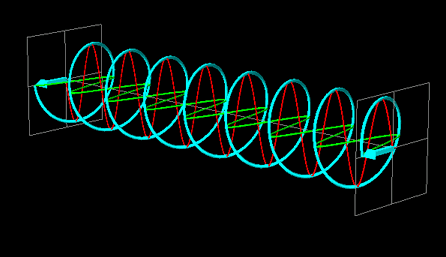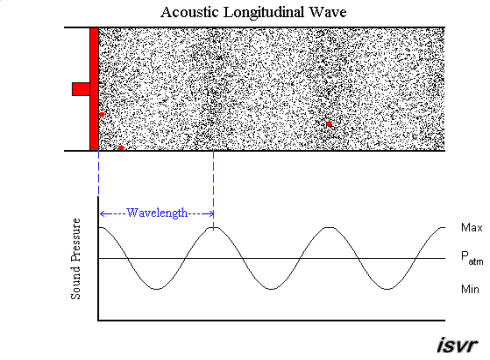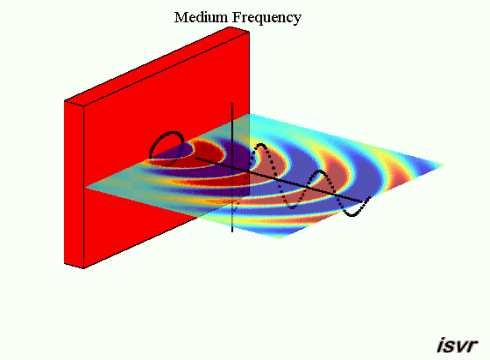
Resonance: the true magic of sound
"Everything vibrates."
From atoms to stars, the entire universe is a web of motion and frequency. But when a body is influenced by a vibration that "matches" its own, something happens:
resonates.
Resonance is not simply the meeting of two vibrations, but the the ability of a body to be activated by another frequency that passes through it and awakens itIt's a subtle induction, a natural amplification. And although it manifests itself physically—like when a note vibrates a string without touching it—its reach is much broader.
Resonance moves art and architecture, aligns planetary systems, and awakens deep memories in our cells. It is a key to the universe that reveals how everything is connected by invisible affinities.
That's why, when we socially identify with other people, we say we "resonate."
It is opening oneself to the living influence of sound, of form, of the other.
Let's embark on a fascinating journey where sound can unlock the most intimate secrets of the Universe and its laws.
First... what is vibration?
In physical terms, vibration is the oscillating motion of a body around a point of equilibrium. Everything that vibrates—a string, a molecule, a mountain—generates a rhythmic variation in the space or energy around it. This oscillation can be visible or invisible, audible or silent, fast or slow, but it always involves a frequency: a measure that tells us how many times that motion is repeated in one second. To understand vibration is to begin to hear the fundamental language of the universe.



What is resonance and how does it apply to sound?
Resonance, in simple terms, is when an object vibrates at its natural frequency due to an external force.Imagine blowing into an empty bottle and hearing a tone: that's resonance. According to Physics Classroom, occurs when sound waves cause something to vibrate louder if they match its natural frequency, such as when you sing a note and a crystal glass resonates until it shatters, an event famously observed by opera singer Enrico Caruso in 1906. In music, the strings of a guitar vibrate, and the wooden body resonates to amplify the sound, creating that rich melody we feel in our chests. It's as if the instrument "sings" with us, amplifying our creative voice.
Everything in the universe, from living beings to inanimate objects, has its own characteristic vibration or resonant frequency, that is, the way it oscillates spontaneously.This also applies to every cell, organ, atom, and molecule in our body, as well as everything around us.
Then there is what is called the Resonance Effect or the Resonance Principle, also known as "Sympathetic Vibration." This phenomenon describes how a vibration can propagate, reach another element, and cause it to begin oscillating in the same tune.Although it may seem like magic, it isn't; it's a basic principle of physics related to sound and waves.
A clear example of this effect is observed with two tuning forks tuned to the same frequency. If you strike one to make it sound, the other, untouched, will begin to vibrate and emit sound as well. The energy generated by the first tuning fork stimulates the second, bringing it into a state of resonance.
Resonance occurs when there is synchronization between vibrations, a compatibility of energies that share the same frequency. The external can influence the internal and vice versa, generating a connection between the two. This coincidence activates and amplifies the vibration, increasing its power, and this is when "Re-Sounding" occurs, which essentially means vibrating in unison with another frequency.


Why is resonance important?
Resonance is the key that enables feedback, the flow of information, and energetic interaction. It is a powerful universal law that demonstrates that everything in the cosmos is interconnected through vibrations, or vibrational waves.
Since everything in existence is in constant vibration, each thing has its own resonant frequency, regardless of whether we can perceive it or not. Related to this, all systems of the human body—organs, tissues, bones—have their own specific frequencies. These combine to form a unique harmonic that, along with the vibration of our thoughts and emotions, defines our personal resonance, our “signature sound.”
We are like "living tuning forks," emitting a constantly changing mix of frequencies. The most fascinating thing is our ability to resonate, to align and vibrate in harmony with other frequencies. That is, without a doubt, our greatest strength.
Resonance not only enriches music; it's essential in our daily lives. Think of a swing: if you push it at just the right moment, it goes higher. That's resonance, maximizing energy, as explained by ScienceDirect Topics. But it can also be dangerous: in 1940, the Tacoma Narrows Bridge in the US collapsed due to winds that matched its natural frequency, causing it to vibrate until it collapsed, according to BritannicaIn medicine, magnetic resonance imaging (MRI) uses resonance to create detailed images of our brains, helping diagnose diseases. According to recent estimates, more than 60 million scans will be performed annually by 2023. It's a tool that creates and destroys, unites and reveals.
How does resonance influence common music?
Every time you play an instrument, resonance is at work. The strings of a violin vibrate, and the wooden body resonates to project the sound, giving it that warm, deep tone, as detailed Recording ConnectionIn a flute, the air inside the tube vibrates at specific frequencies, creating clear notes. Even concert halls are designed to resonate, amplifying the music to fill the space. Think of a live concert: the hall's acoustics can make a piano note resonate like a heavenly echo, connecting the audience to the performer. Resonance gives music character, transforming simple vibrations into emotions, and is crucial to production, where factors like the instrument's size and material affect the sound, according to Digital Sound & Music.


Could resonance alter matter?
Here we enter fascinating territory.
We know that resonance can break a glass if you hit the right note—a classic example in physics. But what if it could do more?
Vibrational Disruption of Matter
Acoustic resonance profoundly impacts matter by inducing vibrations at an object's natural frequency, resulting in significant physical changes. Research like that of Anthony Holland demonstrate this effect in cancer cells, where high-frequency sound waves, often in the ultrasonic range, resonate with cellular structures, causing them to oscillate and potentially rupture. Holland's experiments showed that specific frequencies can disrupt cancer cell membranes without harming healthy cells, offering a noninvasive therapeutic approach. This principle extends to other materials, where resonance can modify molecular structures or induce stress, as in the well-known example of a singer breaking a glass upon reaching its resonant frequency.
Acoustic Levitation and Material Manipulation
Acoustic levitation, which once seemed like magic or science fiction, is now a reality demonstrated in laboratories around the world. Using standing waves, scientists have managed to suspend water droplets, particles, and even biological samples in the air without touching them. This invisible dance occurs thanks to pressure nodes that emerge when sound waves intersect and stabilize objects in space. At centers like ETH Zurich, objects several centimeters in size have been successfully levitated, opening the door to new forms of manufacturing without direct contact—ideal for delicate materials like pharmaceuticals or microelectronics. In essence, sound resonance is showing that it can move matter with almost alchemical precision. (Nature).
Neurological Modulation through Resonance
Beyond the physical, sound is also tapping into consciousness. Recent research has shown that specific acoustic frequencies, such as low-frequency ultrasound, can noninvasively modulate neural activity. Labs like MIT are exploring how these waves can stimulate or calm brain regions, with applications in the treatment of Parkinson's, depression, and other neurological disorders. What's fascinating is that these technologies, while scientific in their method, engage with ancient practices that already knew that sound can transform states of consciousness. Now, neuroscience is beginning to confirm what mystics always intuited: that sound isn't just heard... it's felt, and it reshapes us from within. (Nature).
Future Horizons in Acoustic Control
Looking to the future, acoustic resonance is emerging as a highly precise design and healing tool. Techniques such as acoustic holography are already generating three-dimensional sound pressure fields capable of manipulating tissues or precisely directing medications within the body. Even nanotechnology is beginning to dance with sound: some research suggests that acoustic waves could assemble nanostructures by vibrating particles in specific patterns, almost like composing with atoms instead of notes. We are on the verge of a new era in which sound will cease to be just vibration… and will become living architecture, invisible medicine, and a bridge between science and spirit. (ScienceDirect: Acoustic Nanotechnology).
How was resonance used in ancient times?
Entering an ancient temple is like feeling the stones themselves sing. In cultures from Egypt to Greece, sacred temples were built like veritable musical instruments: tuned with exact proportions and echo chambers designed to amplify chants and prayers. In Egypt, for example, temple layouts followed “harmonic proportions” with intentional acoustics that allowed sacred words to resonate throughout the grounds. The Greeks, meanwhile, sculpted their open-air theaters—often linked to religious festivals—with such precision that even a softly spoken line could be heard clearly in the farthest stands. In other words, these temples and theaters were literally “frozen music,” where geometry and stone lifted the human voice toward the divine.
In Indian temple tradition, the connection between stone and sound was also deeply intentional. At the 15th-century Vitthala Temple in Hampi, dozens of solid granite columns resonate the notes Sa–Re–Ga–Ma when struck, a mystery that still puzzles modern engineers. Acoustic research suggests that each column was carved to vibrate at a specific pitch, reflecting a culture where “the art of music and dance was an offering to the divine.” Similar wonders arose in Egypt: medieval chronicles tell of priests using “magic papyrus” and vibrating rods to move heavy blocks, and the chambers of the Great Pyramid have been shown to amplify certain bass tones impressively. These stories (real or mythical) show how deeply these civilizations trusted in the power of sound: in their view, vibrations could heal… or even move the impossible.Journals).

In Mesoamerica, the pattern repeats itself. At Chichén Itzá, the step pyramid of Kukulkán “sings” like the sacred quetzal bird when you clap at its base—so precise that one researcher claimed the Maya literally “encoded a sound in stone,” calling the echo of the singing “the world’s oldest sound recording.” In the Maya worldview, echoes were sacred—“the voices of the spirit world,” they said—so that echoing bird-chirp was like the gods responding. And this idea wasn’t unique to pyramids: even Stonehenge, in England, has its own acoustic magic. A recent study found that voices and music inside the stone circle were naturally amplified, turning the monument into a kind of prehistoric concert hall. From Mexico to Mongolia, these sonorous sanctuaries intertwined sound with sacred geometry: space and stone were shaped so that healing chants, ecstatic dances, or divine invocations would resonate powerfully… enabling the human voice to be as powerful as the gods it honored.

Relationship between sound resonance and cosmic resonance
The universe also resonates, like a cosmic symphony. Gravitational waves, discovered in 2015 by the LIGO observatory, are actual vibrations of space-time caused by events of enormous magnitude, such as the collision of black holes. These ripples travel through the cosmos like echoes of an ancient event, reminding us that the entire universe is in constant vibration. This is what is called cosmic resonance: a primordial music that not only informs matter but also organizes its dance. Like a choir singing a common note, the Earth's resonance is an echo of these universal frequencies. They are two different forms of the same energy: vibration. (Nature Physics).
From a harmonic perspective, it is possible that the gravitational movement of the cosmos naturally tends toward balance and coherence. Galaxies, stars, and planets move along trajectories that, over millions of years, seek synchronicity. The imperfections, anomalies, or dissonances we observe in our solar system or even on Earth are merely momentary deviations within a larger dance that tends toward balance. This search for equilibrium is not static, but resonant: celestial bodies interact through gravitational frequencies, responding to each other as if trying to tune themselves within a larger cosmic score.
Thus, sound on Earth is not an isolated phenomenon: it is a reflection, a vibrant miniature of the great symphony of the universe. Theories such as Cosmic Resonance Theory They explore precisely these affinities between celestial bodies and terrestrial structures, suggesting that there is a vibrational correspondence between everything that exists. Listening, singing, and harmonizing isn't just art or therapy: it's, perhaps, a form of remembering. Remembering that we are part of a much larger orchestra, where every atom, organ, being, and galaxy is part of the same score. One where harmony is not an abstract ideal, but a universal principle that guides all life.
Reflection
Resonance is not just a physical phenomenon:
It is an invisible language that intertwines matter, consciousness and time.
More than a reaction, it is a deep sensitivity:
When a body vibrates when it is hit by a frequency that is its own, a memory, a connection, an opening is activated.
From the walls of ancient temples that amplify chants,
even the sound frequencies that influence our nervous system,
The whole of life seems to be structured around the pulse.
To listen is to participate. To fine-tune is to remember.
Every vibration that passes through the body or space
It carries with it a subtle call towards balance:
an echo of the greater music that sustains the cosmos.
It is no coincidence that the sacred—in all cultures—has been sung,
intoned, invoked with sound.
The universe is expressed in waves: sound, light, gravitational.
And by recognizing that, we understand that our existence is not separate
of that universal orchestra.
We are instruments in search of tuning.
Perhaps, in these times of noise and disconnection,
The most revolutionary act is to return to silence, to the body,
and to conscious sound.
Because in every perfect tone, in every vibrant gesture, in every harmonious echo…
a door opens.
A door to what always was:
harmony as origin, path and destination.
Sources
- Physics Classroom explanation of resonance and sound
- Recording Connection on resonance in music production
- National Geographic on Maya temple acoustics
- Quanta Magazine on quantum and cosmic resonance
- ScienceIndiamag on acoustics in Indian temples
- ResearchGate on acoustic resonances in ancient structures
- Wikipedia on sonoluminescence
- Byjus on resonance examples
- Nature Physics on gravitational waves
- Cosmic Resonance Theory on cosmic affinities
- Acoustics Today on musical resonance
- TDK on resonance in technology
- Scientific American on resonance applications
- Britannica on resonance vibration
- ScienceDirect Topics on acoustic resonance
- Digital Sound & Music on resonance in instruments
- Archaeoacoustics Wikipedia on ancient acoustics
